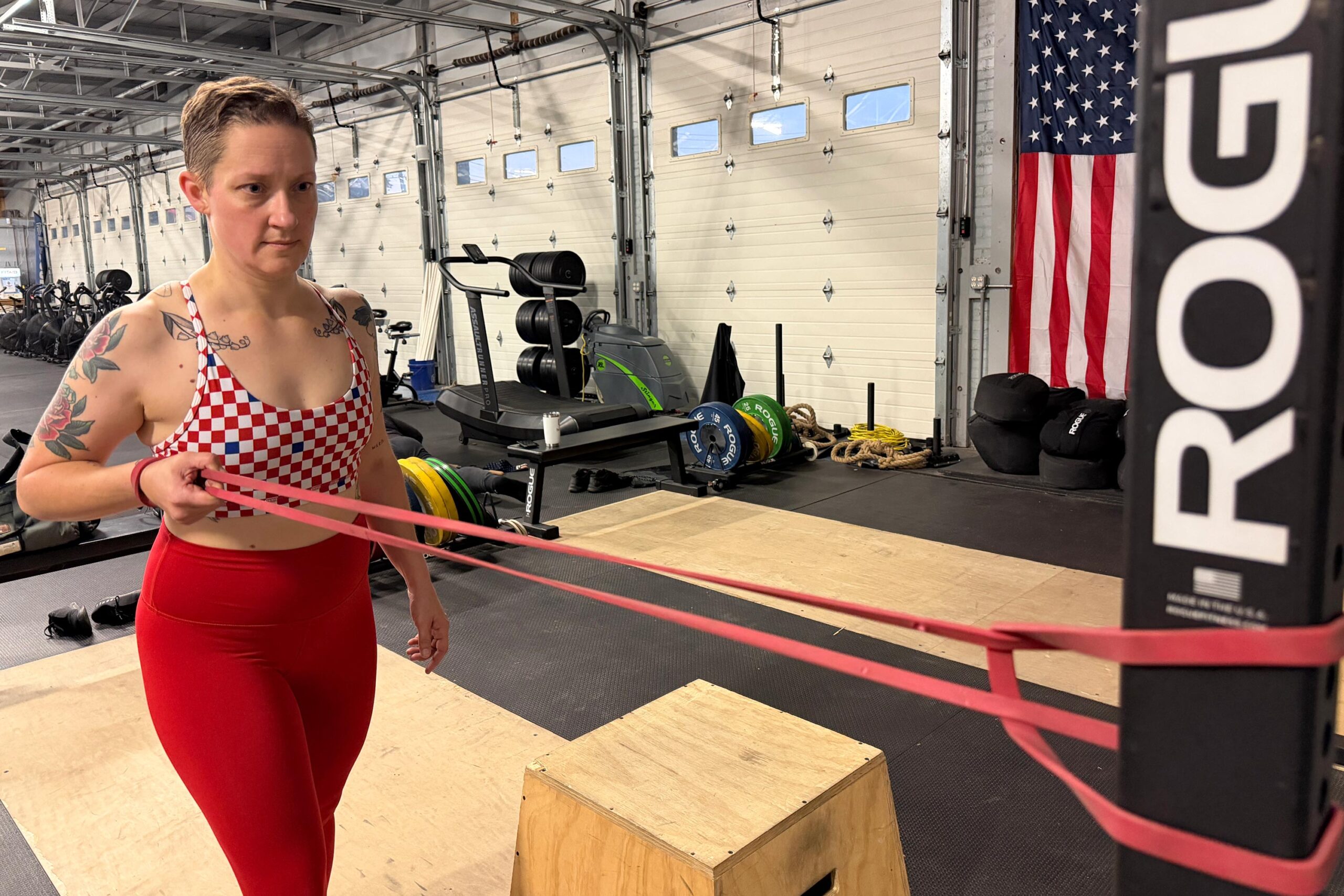Health
Combat ‘Tech Neck’ with These Four Exercises from a Therapist

The increasing reliance on personal devices has led to a widespread issue known as “tech neck,” characterized by forward head posture and discomfort in the neck and shoulders. According to physical therapist Patrick Suarez from Albany, New York, this condition stems from the habitual tilting of the head in front of the body’s center of gravity, often while using smartphones, tablets, and laptops. The resulting pain can restrict movement and disrupt daily activities.
Many instinctively seek relief through neck stretching. However, Suarez warns that this approach can exacerbate the problem. He explains that when individuals lean forward to check their devices, they overstretch the muscles in the back of their necks, which connect to the shoulder blades and upper back. To address this issue effectively, strengthening these muscles is essential.
Understanding Tech Neck Beyond Devices
Tech neck is not solely a consequence of device usage. Individuals who spend considerable time driving can also experience similar postural challenges. Suarez advises drivers to maintain proper seating posture by positioning their backs against the seat, aligning their shoulders, and placing the back of their heads against the headrest. He emphasizes the importance of adjusting mirrors to fit this posture rather than reverting to a poor position.
While it may be unrealistic to expect individuals to maintain perfect posture throughout the day, small, consistent adjustments and targeted exercises can lead to significant improvements over time. Suarez acknowledges that for those accustomed to slouching, the path to better posture involves gradual development.
Four Exercises to Strengthen the Neck and Upper Back
To counteract the effects of tech neck, Suarez recommends incorporating specific exercises that focus on strengthening the upper back and ensuring proper alignment of the head over the shoulders. These exercises target the muscles between the shoulder blades, as well as the levator scapulae and trapezius muscles, which play critical roles in maintaining a healthy neck posture.
1. **Wall Angels**: This exercise improves posture and mobility. Stand with your back against a wall, ensuring that your low back, shoulders, and head are in contact with it. With your arms bent at 90 degrees and elbows level with your shoulders, slowly slide your hands overhead while maintaining contact with the wall, then return to the starting position.
2. **Thoracic Spine Wall Rotation**: This exercise enhances upper back mobility. Assume a half-kneeling position beside a wall, with one thigh against it. Place your fingertips behind your ears and rotate your torso to touch the wall with both elbows, then return to the starting position. Repeat on the opposite side.
3. **Row Variations**: Pulling exercises improve shoulder blade alignment. For a single-arm row, anchor an exercise band at chest height. Stand staggered with one foot in front, grasp the band, and pull it towards your body, squeezing your back muscles. Perform the same with a high to low row by anchoring the band above your head and pulling down towards your ribs.
4. **Prone I’s, T’s, and Y’s**: These exercises target various shoulder blade muscles. Lie face down on a stability ball, letting your arms hang. Raise your arms diagonally to form a “Y,” then lower them and raise them to create a “T.” Finally, extend your arms behind you to form an “I,” all while squeezing your shoulder blades together.
By implementing these exercises regularly, individuals can counteract the muscular imbalances caused by prolonged tech neck and improve overall posture. As Suarez suggests, small, incremental changes can lead to lasting benefits, allowing for a healthier alignment and less discomfort in daily life.
-

 Business4 days ago
Business4 days agoInvestors Eye Potential $60,000 Gains with Ozak AI Token
-

 Politics5 days ago
Politics5 days agoFormer Pastor Arrested on Human Trafficking and Indecent Charges
-

 Business5 days ago
Business5 days agoQuotient Wealth Partners Adjusts Holdings in iShares Russell 1000 ETF
-

 Lifestyle5 days ago
Lifestyle5 days agoNatty from KISS OF LIFE Stuns in Micro-Shorts at Seoul Event
-

 Politics4 days ago
Politics4 days agoSkip Bayless Critiques Travis Hunter’s Game Day Baptism
-

 Business5 days ago
Business5 days agoCalifornia to Ban All Plastic Bags in Grocery Stores by 2026
-

 Entertainment5 days ago
Entertainment5 days agoUtah Residents Face Resource Shortages Amid Ongoing Government Shutdown
-

 Entertainment5 days ago
Entertainment5 days agoPete Davidson Surprises Pregnant Girlfriend with Private Jet to Concert
-

 Entertainment5 days ago
Entertainment5 days agoAce Frehley, KISS Guitarist, Passes Away at 74 After Fall
-

 Science5 days ago
Science5 days agoCommunity Mourns Loss of Judith Ernst, Pioneer Educator at 81
-

 Politics5 days ago
Politics5 days agoIberia Parish Sees Surge in Marriage Licenses Issued in October
-

 Science5 days ago
Science5 days agoMIT Develops Groundbreaking 3D Brain Models for Personalized Therapies









